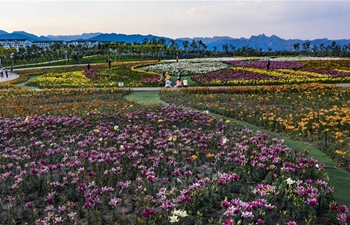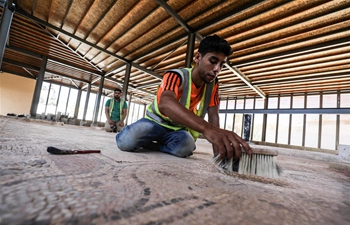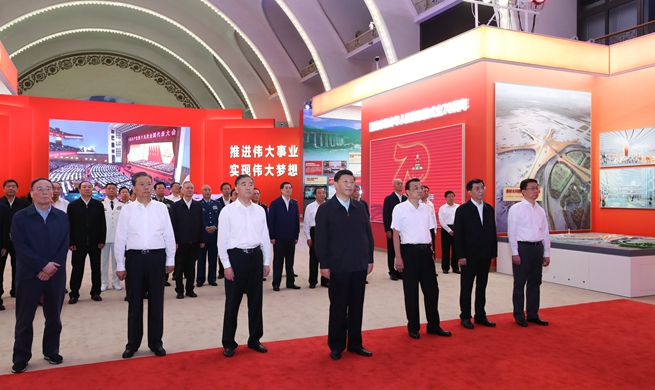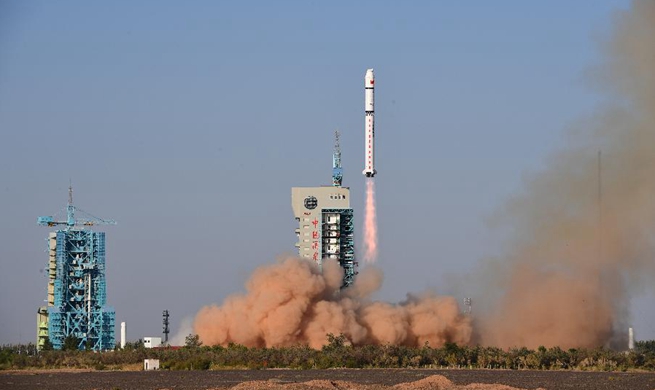MANILA, Sept. 25 (Xinhua) -- Economic growth in developing Asia remains robust but slow-down is expected as trade and investment weaken, according to an updated Asian Development Bank report released on Wednesday.
The report, Asian Development Outlook (ADO) 2019 Update, forecasts economic growth in the 45 economies of developing Asia at 5.4 percent this year before nudging up to 5.5 percent in 2020, down from 5.7 percent previously forecast in 2019 and 5.6 percent in 2020.
ADO is the flagship economic publication of the Manila-based bank.
The newly lowered forecasts reflect gloomier prospects for international trade due in part to escalating trade tensions between some countries, as well as slowing economic growth in advanced economies and the large economies of developing Asia, including China, India, South Korea, and Thailand.
Excluding the newly industrialized economies of China's Hong Kong, South Korea, Singapore and China's Taiwan, developing Asia is forecast to expand by 6.0 percent this year and 2020, also down versus ADB's previously forecast 6.2 percent in 2019 and 6.1 percent in 2020.
In Asia, ADB Chief Economist Yasuyuki Sawada said "weakening trade momentum and declining investment are the major concerns (that need to be) monitored closely by policymakers."
"The risk of deeper malaise in the global economy, and uncertainty over how policymakers around the world will respond to weaker global growth, may stoke volatility in global financial markets," Sawada said, warning that "proliferating private debt in some regional economies could pose another challenge to financial stability."
The ADO Update report says prospects for growth vary across the subregions of developing Asia.
The slowdown in global trade coupled with a sharp downswing in the electronics cycle has pulled down forecasts for China and the more open economies in East and Southeast Asia.
ADO Update forecasts China's economy to expand 6.2 percent this year and 6.0 percent next year.
The report says East Asia as a whole is expected to grow 5.5 percent in 2019 and 5.4 percent in 2020, while Southeast Asia is seen expanding 4.5 percent and 4.7 percent, respectively.
For India, the report says weaker investment prior to the April to May general elections as well as tighter credit is weighing on India's growth outlook this year, with gross domestic product (GDP) now expected to slow to 6.5 percent in 2019 before ticking up to 7.2 percent growth in 2020.
"South Asia as a whole is seen growing 6.2 percent and 6.7 percent in 2019 and 2020, respectively," adds the report.
With public spending stimulating the economies of Kazakhstan and Uzbekistan, the report says that Central Asia's economic growth is forecast at 4.4 percent this year and 4.3 percent next year.
Meanwhile, it says that Papua New Guinea's recovery from an earthquake is helping to boost growth in the Pacific subregion to 4.2 percent this year before moderating to 2.6 percent next year.
The ADO report says that public and private debt has risen in developing Asia since the 2008-2009 global financial crisis with debt-to-GDP expanding around two-thirds over the last two decades. The report notes that rapid debt buildup can be a danger to financial stability and urges policymakers to remain vigilant.
Inflation has ticked up largely due to rising food prices in the region, including China as African swine fever has pushed up meat prices. The report predicts headline regional inflation of 2.7 percent in both 2019 and 2020.
"Inflation remains benign in the region, but the pressure is building slightly as food prices rise. Inflation across developing Asia is forecast at 2.7 percent this year and next, or 0.2 percentage points up from April forecasts," Sawada said.
Established in 1966, the ADB is owned by 68 members and 49 from the Asia-Pacific region.













